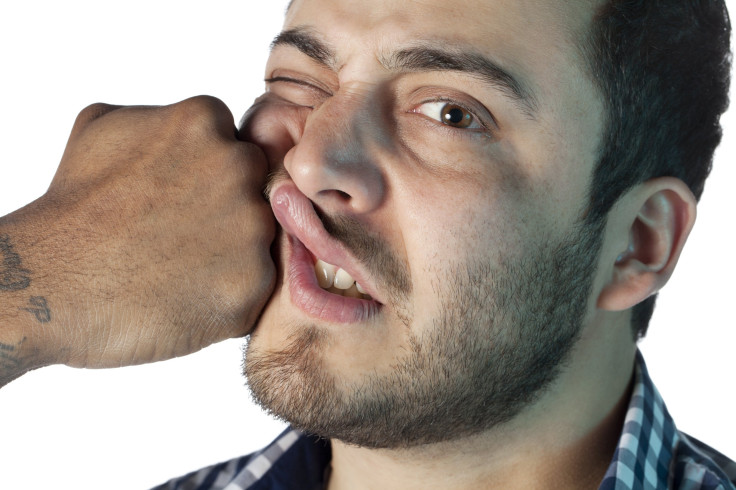Evolution Formed Our Faces To Withstand Punching, Shaping Bones To Shape Of Incoming Fists

A new study, published in Biological Reviews, points out the possibility that human facial features evolved over time to better withstand punching. It’s something called “the protective buttressing” hypothesis, and it suggests that it wasn’t necessarily our need to chew tough foods like nuts that made our faces what they are today — but rather fist fights.
Over time, the human face became more robust in order to protect it against repeated impact by smaller objects like another person’s fist, the authors suggest. This same process also developed the human hand to better handle the impact of punching itself. “When modern humans fight hand-to-hand the face is usually the primary target,” David Carrier, co-author of the study, said in a press release. “What we found was that the bones that suffer the highest rates of fracture in fights are the same parts of the skull that exhibited the greatest increase in robusticity during the evolution of basal hominins.”
The authors describe this evolution as something that over gradual time to create a better protected face from flying fists. “[I]f indeed the evolution of our hand proportions were associated with selection for fighting behavior you might expect the primary target, the face, to have undergone evolution to better protect it from injury when punched,” Carrier explained. The researchers continue in the abstract:
Specifically, the trend towards a more orthognathic face; the bunodont form and expansion of the postcanine teeth; the increased robusticity of the orbit; the increased robusticity of the masticatory system, including the mandibular corpus and condyle, zygoma, and anterior pillars of the maxilla; and the enlarged jaw adductor musculature are traits that may represent protective buttressing of the face.
Facial features are some of the most sexually dimorphic parts of the human skull — meaning they contain the biggest physical differences between males and females. The authors believe that the protective buttressing hypothesis also coincides with the notion that “modern humans can accurately assess a male’s strength and fighting ability from facial shape and voice quality,” which explains why a powerful neck and jawline are popularly considered attractive or a sign of strength.
Carrier and his fellow researcher, Michael H. Morgan, both from the University of Utah, have examined the role of violence in evolution in previous research. They believe that violence plays a larger role in human evolution than accepted. Carrier explains in the press release:
The debate over whether or not there is a dark side to human nature goes back to the French philosopher Rousseau who argued that before civilization humans were noble savages; that civilization actually corrupted humans and made us more violent. This idea remains strong in the social sciences and in recent decades has been supported by a handful of outspoken evolutionary biologists and anthropologists. Many other evolutionary biologists, however, find evidence that our distant past was not peaceful.
The hypothesis that our early ancestors were aggressive could be falsified if we found that the anatomical characters that distinguish us from other primates did not improve fighting ability. What our research has been showing is that many of the anatomical characters of great apes and our ancestors, the early hominins (such as bipedal posture, the proportions of our hands and the shape of our faces) do, in fact, improve fighting performance.
Morgan ultimately believes their research is about human nature and peace: “Our research is about peace,” he said in the press release. “We seek to explore, understand, and confront humankind's violent and aggressive tendencies. Peace begins with ourselves and is ultimately achieved through disciplined self-analysis and an understanding of where we’ve come from as a species. Through our research we hope to look ourselves in the mirror and begin the difficult work of changing ourselves for the better."



























